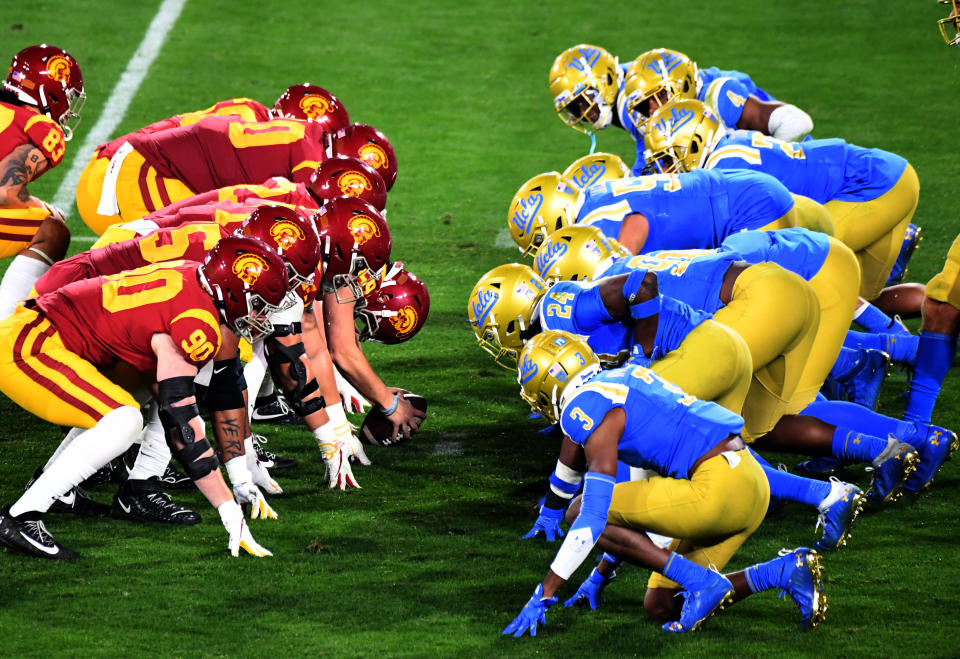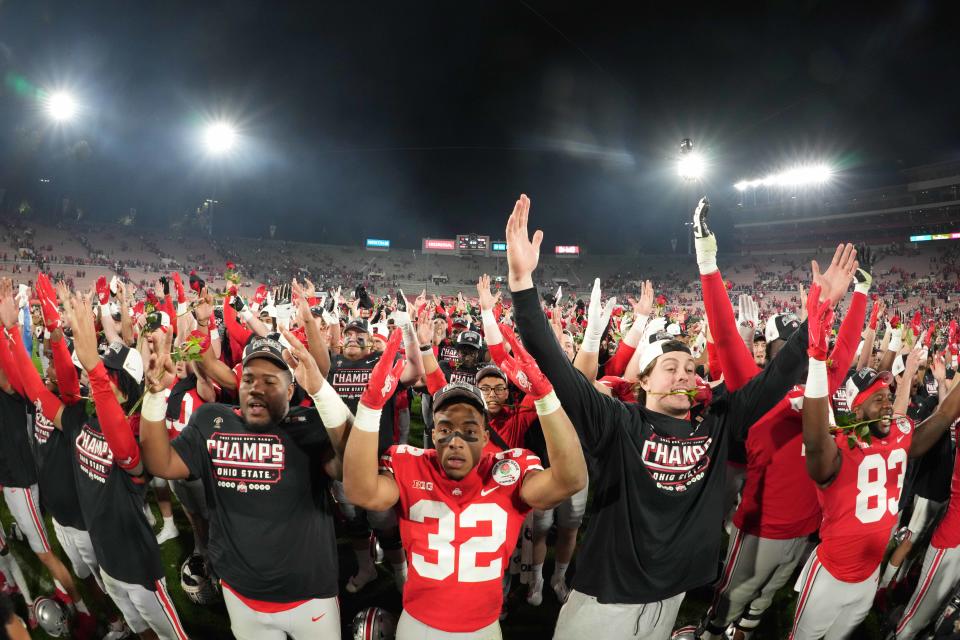Last summer, the Universities of Oklahoma and Texas abruptly announced they were bailing on their longtime home in the Big 12 Conference to join the far wealthier and far more competitive SEC.
It should have been a warning flare for every conference to make sure their flagship athletic programs were happy and committed to staying. You know, like USC and UCLA, big brands in a big market, yet part of a conference trying to find competitive footing — in football and finances at least.
If the Pac-12 tried, well, it didn’t try hard enough.
Or maybe nothing would have mattered, what with the Big Ten on the verge of negotiating a new media rights deal that should pay over $1 billion per year. The Pac-12’s simultaneous negotiations were nowhere near as robust. Even conservative predictions had Big Ten schools making $40 million more per year on media. It could easily be more.
So now Jon Wilner, the veteran Pac-12 reporter, broke the news Thursday that USC and UCLA were negotiating to leave for the Big Ten in 2024. The schools later made it official in an announcement.
The move is stunning, yet somehow, not surprising at all. It is tectonic in nature for college sports overall and cataclysmic for many portions of it, namely the Pac-12 schools left behind. It would be a huge victory for the Big Ten, as long as you discount “tradition,” which the league did years ago, or cries of “hypocrisy.”
It is the next step in the evolution to a smaller, rich superconference setup at the top. The Big Ten and the SEC have television deals that dwarf the competition. The Big 12 and Pac-12 are now gutted.
The ACC is being held together by its comparatively low-paying, but lengthy media contract that runs through 2036. The deal grants each school’s media rights to the conference, which makes valuable programs such as Clemson, Florida State, North Carolina, Miami and others untouchable.
For now.
At least we think.
The Big Ten wanted to add USC and UCLA, and USC and UCLA wanted to be added. One source said the entire thing came together in the past couple of weeks.


Diabolical move from Big Ten in shanking Pac-12 and Alliance
Let’s start with the Big Ten. The deal is awkward at first, but a no-brainer for the league. First off, as the Texas-Oklahoma-SEC marriage showed, if big, powerful schools want to move, they are going to move. If USC and UCLA were offering up entry into Southern California, then someone was going to take them. It could have even been the SEC.
By strengthening the Big Ten, it also helps ward off any wandering eyes of say Ohio State.
It’s depressing, but that’s the reality with college athletics right now. If you aren’t getting stronger, you are getting weaker. You either act or react.
The duplicity of the Big Ten is, of course, almost unquantifiable. A year ago the league clutched its pearls and bemoaned the aggressive and destabilizing actions of the SEC for grabbing Texas and Oklahoma. It was ridiculous then because had UT and OU called the Big Ten first, then the Big Ten would have done precisely what the SEC did.
Still, the Big Ten tried to claim a moral high ground. It even formed a so-called “Alliance” with the ACC and Pac-12 — yes, the Pac-12 — to supposedly offset the SEC’s manifest destiny.
Not even 12 months later, it shanked its Alliance partner and probably did even more than the SEC to blow up the longstanding system of college athletics.
This was, without question, some diabolical behavior.
That’s where the world is right now. The Big Ten will muffle down the criticism by stuffing thousand dollar bills in its ears while enjoying midwinter basketball trips to Venice Beach.
For the Big Ten, the two L.A. schools will make an expected historically rich media package even richer. The league now stretches literally coast to coast, with Maryland and Rutgers on one side, California on the other. The chance to get into the Los Angeles market for recruiters (both athletic and academic) is a boon.
Additionally, this is a welcome development for so many Midwestern transplants and Big Ten alumni living in L.A. Ohio State playing a regular-season football game in the Coliseum? Tom Izzo bringing his basketball team to Pauley Pavilion? Done and done.


What departures of USC, UCLA mean for Pac-12
As for USC and UCLA, we’ll see. Yes, they have more money, but that means more money for athletic departments to waste on unnecessarily opulent facilities, ridiculous coaching contract buyouts and general excess. None if it translates to the fans, who want to win more than anything and now face deep and daunting competition.
Gone are historic rivalries, or a regular presence in the Bay Area or other locales. Road trips are going to be long, longer and longest. And they’ll be frequent. The basketball and other Olympic sport teams will almost never be anywhere near home.
This will be a shock to the system. Anyone who is confident it will go smoothly or as planned is selling a fantasy. No one knows. No one ever knows about these kinds of deals. Nebraska football used to be the most consistent winner in college sports. Then it joined the Big Ten and nothing has been the same; and Lincoln is a lot closer than L.A.
Finally there is the Pac-12 and other conferences. However the media rights negotiations were going for the Pac-12, they are officially off now. Losing the L.A. schools decreases the value of any deal by at least a third, one source figured. More germane: Who is even going to be in this conference? The remaining 10 schools have to be exploring their own exit plans.
Do the stronger schools link up with the Big 12 or will they try to raid that league to fill gaps? What about the Mountain West with maybe San Diego State and Boise State, neither of which carried the academic might the Pac-12 used to demand.
Oregon, among others, has to be desperate now. It has built an athletic power thanks to Phil Knight and Nike, but without steady access to L.A. recruits, dwindling money and its geographic isolation, can that continue? Will Oregon State and Washington State get left out of a shuffle?
It’s all uncertain. It’s all a mess. It’s all an uncertain mess, one year after the last uncertain mess.
College sports is sorting through things, none of which are good for the overall health of the industry. True fans love the 100-plus team circus of college football, love that conference races and rivalries far away matter, love that enough passion exists all over the country to generate wall-to-wall action every weekend.
This stuff erodes that.
That’s the business. No turning back. Texas and Oklahoma sent the warning shot last summer. USC and UCLA just went one step beyond.
So buckle up, the summer is just beginning.
